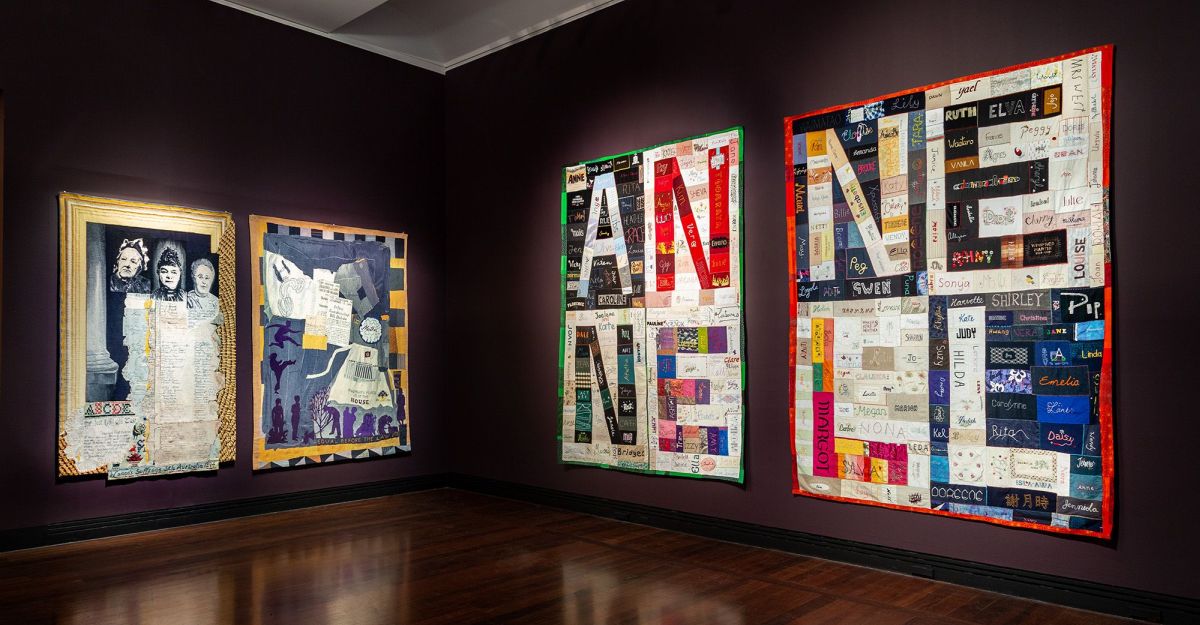It wasn’t even midday, and we were already wasted in the temple of Mexico’s newest unofficial saint, Santonatron. A ragtag collection of avant-garde artists, punk rockers and curious members of the public handed around frothing cups of pulque – a slimy alcoholic beverage once drunk by the Nahua people during sacred rituals and today beloved by Mexican hipsters. We had a barrel of the sour, yeasty stuff to get through, and none was going to waste. Packed into the small temple, the congregation was surrounded by shrines glimmering with candles dedicated to Santonatron, decorated with photos, flowers and a toy pistol. Outside, the high priest and an assistant were hammering together a homemade throne for the saint’s debut procession.
It was 6 August, the inaugural Feast Day of Santonatron, the artist’s saint. Largely unheard of outside a small group of artists in Puebla, Mexico, the saint has already sparked controversy. Despite historically being known as a bastion of conservatism, Puebla already has its fair share of unofficial folk saints, with the Catholic Church often condemning their followers as heretics at best, cults at worst. At first glance, Santonatron may look no different. The founder of the temple, Armando Tanus, certainly baffled some of his friends when he first announced plans to begin the worship of Santonatron two years ago. Tanus himself is an artist – a painter, to be specific.
‘The first time he presented the idea to me, I thought it was a bit strange,’ said Sergio Garibay, a childhood friend of Tanus. ‘I thought like – he’s trying to create a religion!’
Cult, or call-to-arms?
Tanus has already invented a collection of prayers for the worship of the saint, and holy items like figurines and blessed water were available at the temple. It all looked convincingly religious.
However, Garibay said the closer he looked at Santonatron, the more it looked like Tanus’ most ambitious art project yet. ‘I think the idea … is to create consciousness,’ Garibay said.
‘Artists need recognition,’ he continued, ‘they need faith; they need things that other people have, but the conditions in Mexico mean they don’t have.’
Although Mexico’s alternative art scene has enjoyed a boom in popularity in recent years, artists themselves often complain of a lack of government support.
One community of artists that’s seen no government assistance is the Ave Cooperative, a group of independent engraving printers who produce some of Puebla’s edgiest prints.
Their members weren’t involved in the Santonatron march, though they agreed it’s extremely difficult to make a living as an independent artist in Mexico. In an email interview, an Ave spokesperson blamed consumerist culture, while adding the government isn’t helping. ‘The government only supports [projects] aligned with them, and in relation to certain themes … and the support they give is just for their own friends,’ the spokesperson said.
The biggest problem for artists, they explained, is the low price for works, and low priority given to promoting alternative artists. ‘The public isn’t well aware of what’s happening with artists,’ they lamented.
Is Santonatron a satire?
Back at the temple, other visitors had their own ideas about what Santonatron might represent.
‘It’s an interesting social experiment,’ said Pablo Madrid, as he watched a figure of Santonatron being attached to the throne. ‘It’s cool, and I like strange things,’ he said.
Over a cup of pulque, he said he couldn’t help but notice the entire Santonatron project so resembled actual Mexican traditions.
‘So many people have traditions just like this, but they don’t actually understand them,’ he said.
Madrid pointed to Mexico’s most famous religious figure, the Virgin of Guadalupe. The virgin herself is closely associated with a basilica in Mexico City that was built on the ruins of an Aztec temple dedicated to the Nahua goddess Tonantzin. Guadalupe and Tonantzin have a complicated relationship, with early Nahua converts often viewing them as one and the same. Madrid argued this history of Guadalupe is all too often ignored, and said he was interested to see how the public would react to a totally new saint.
‘It’ll be interesting to see what the reaction is on the streets,’ he said.
The march
A few more cups of pulque later, and we were on our way to finding out. The stuffed figure of Santonatron was dressed in a suit, given a ritualistic mask and placed on his throne. Meanwhile, Tanus put the finishing touches on his own outfit, which included a black button up shirt fastened with a white priest’s collar.
Before we’d even left the temple, the first problem reared its head: Santonatron kept slipping off his perch, and had to be tied in place. Even then, his head kept dropping in a way that gave the impression that the saint was as drunk as the rest of us.
Tanus found a broken broom stick, and rammed it down between the back of Santonatron’s neck and clothing. It worked, and the saint jolted upright like a death row prisoner being electrocuted.
Tanus chuckled and muttered, ‘Artistic license, right?’
The next challenge was getting the saint out the doorway. The temple was located in a small apartment on the second floor. Santonatron was eased through the slim aperture, before being squeezed down a narrow walkway. A few residents looked out in confusion as Tanus started shouting prayers into a megaphone. By the time the wobbly procession had made its way to the street, a small crowd of passers-by had gathered.
The punk rockers began punishing their drums and shredding their guitars, while Tanus finished his first prayer. ‘… and pulque for all!’ was the last line.
Traffic stopped, and our procession of 60 or so mismatched worshippers marched down the road, chanting prayers to a saint nobody had heard of. Pedestrians lined the streets and looked on. Some looked totally confused, others seemed frustrated at what they assumed was yet another political protest. A few crossed themselves when they heard a saint was approaching, only to freeze when they saw the droopy figure of Santonatron. In the daylight, his throne looked like a rickety wooden school chair nailed to a wooden box.
Twice, he fell off his throne, and had to be tied down to the throne by the crowd. Everyone crowded around the limp figure of the saint, and hurriedly lashed him back to the chair. From a distance, it might have looked like some kind of bizarre kidnapping.
Eventually everything was put back in order, and the march continued.
‘Long live the painters!’ Tanus shouted, prompting a cheer from one corner of the march.
‘Long live the rockers!’ he shouted, causing an uproar from the punks.
Then, louder, he shouted, ‘Long live Santonatron!’
All the marchers cheered.
Conclusions
After bringing downtown Puebla to a standstill for an afternoon, the march ended at a local bar, La Despacheria. The owners had agreed to house Santonatron, and serve free pulque to his followers. The throne was raised onto a stage normally reserved for live bands. Outside, rain began pouring down the moment the last stragglers passed the threshold of the bar.
I asked Tanus if he thought Santonatron might have had a hand in the intriguingly timed downpour, but he just laughed and shrugged.
From the stage, Santonatron looked down as his followers took over the bar. A barrel of pulque was cracked open, and mugs overflowing with the stuff were passed around. Unlike beer, it’s difficult to stop pulque from continually fermenting. This means the longer the day goes on, the more potent the pulque becomes. After a few hours in the bar, it was a thick soup with a taste somewhere between lime and old yoghurt, and a punch like the hardest tequila.
Over the umpteenth mug of pulque of the day, Tanus said Santonatron wasn’t intended to draw attention to the plight of Mexico’s artists, or to challenge the country’s conservative culture. Yet nor was it aimed at creating yet another Mexican saint cult.
‘We’re not trying to create a religion,’ he said while sipping the now extraordinarily pungent pulque. The whole thing had been an open ended social experiment, with no real aim beyond seeing what would happen. ‘It’s all experimental, so there’s no serious objective,’ he said.
Tanus explained that the point of the new saint was simply to see what interpretations others would apply to Santonatron. In other words, the whole affair had been something like a Rorschach test (the ink blotch test used by psychologists).
Tanus said everyone is open to adopt their own ideas of what Santonatron is all about. However, he noted Santonatron might not be everyone’s cup of tea. In the lead-up to the march, Tanus fielded criticism from conservatives unhappy with his use of religious aesthetic. Even some alternative artists were critical for bringing religious symbolism into a largely secular space.
‘Look, artists don’t generally believe in anything,’ he said, adding that the idea of a saint might take a while for some artists to come around to.
For now, it’s unclear whether Santonatron can grow beyond a small group of supporters, each with very different ideas of what the saint could represent. For some, it’s a symbol of the desperate needs of alternative artists to be heard and valued. For others, it’s a satire of Mexico’s sibylline religious landscape. For others still, it’s just a good excuse to get some serious drinking done.
Vowing to organise more events for the worship of Santonatron in the future, Tanus said he’s willing to wait, and see how the social experiment plays out over time. ‘This is all a very new concept,’ he said.










